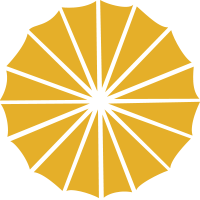Minh Mang King tomb
The tomb is located in La Khe Bai Village, Huong Tho commune, Huong Tra district, 12 km to the west of Hue City centre. To reach the tomb, visitors can travel by road or take a boat upstream on the Huong River. Visiting Minh Mang’s Tomb, many people will be astonished to find a place of art, poetry and philosophy. The solemn and quiet architecture set in a poetic landscape demonstrates both the Emperor's strictness and deep beliefs. Twenty years on the throne, Minh Mang brought Dai Nam country (the former name of Vietnam) and the Nguyen royal family a strong and prosperous future. This man was laid to rest within an ''earthly paradise'' full of bird songs and flowers.
The tomb is located in La Khe Bai Village, Huong Tho commune, Huong Tra district, 12 km to the west of Hue City centre. To reach the tomb, visitors can travel by road or take a boat upstream on the Huong River. Visiting Minh Mang’s Tomb, many people will be astonished to find a place of art, poetry and philosophy. The solemn and quiet architecture set in a poetic landscape demonstrates both the Emperor's strictness and deep beliefs. Twenty years on the throne, Minh Mang brought Dai Nam country (the former name of Vietnam) and the Nguyen royal family a strong and prosperous future. This man was laid to rest within an ''earthly paradise'' full of bird songs and flowers.
In February of 1820, Emperor Gia Long passed away. His fourth son, Nguyen Phuc Dam, succeeded him and was known as Minh Mang. Emperor Minh Mang contributed greatly to the expansion of the Dai Nam and made it the strongest country in Southeast Asia at the time.
After seven years on the throne, Minh Mang had his mandarins search for land suitable for building his tomb. The geological mandarin, Le Van Duc, chose a site in the Cam Khe mountain area, near Bang Lang confluence, where the Huong River is formed from two tributaries, Ta Trach and Huu Trach. However, it took nearly 14 years of planning, considering and choosing before Emperor Minh Mang decided to have his tomb built in this location. He also named the mountain as Hieu Son instead of Cam Khe, and named his tomb as Hieu Lang. The King himself examined and ratified the drawings designed and submitted by mandarins Bui Cong Huyen and Truong Van Que and eunuches.
In April of 1840, the construction of the tomb started. The King ordered the mandarins Le Dang Danh, Nguyen Trung Mau and Ly Van Phuc to conduct and supervise the workers. In the August of 1840, Minh Mang went to check the construction. He demoted the supervisors and suspended construction because the digging of lake Trung Minh was not to his satisfaction. One month later, when the work was just re-commencing, Minh Mang became ill and passed away suddenly in January 1841.
Only one month after succeeding to the throne, in February 1841, Thieu Tri ordered the mandarins Ta Quang Cu, Ha Duy Phien, Nguyen Tri Phuong to instruct nearly 10,000 soldiers and other workers to continue the work, based on his father's drawings. On August 20 1841, Minh Mang's body was buried in Buu Thanh, although the construction of the tomb still continued until 1843. Thanks to human labour and creative minds, this desert mountain area became a solemn site of tomb and temple, both brilliant and harmonious in its combination of architecture and nature. The entire design and ambience of the tomb reflects the depth of the Emperor's thought.
Within the area surrounded by a 1,750 metre long wall is an architectural complex including palace, pavilion and lake-side pavilion. These were symmetrically arranged along a 700 metre axis, the "Than Dao" line running from Dai Hong gate to the foot of the surrounding wall behind the king's grave. The tomb topography ressembles a person lying in a very free posture with the head pillowed on Kim Phung mountain, the legs extending toward the river confluence and the two halves of Trung Minh lake look like two naturally extended arms.
The other structures were distributed on three parallel axis of which "Than Dao" is the central one. Among these architectural features are a lake suffused with lotus perfume and hills covered with green pine, creating a poetic and spectacular landscape. Dai Hong Mon, the main entry gate to the tomb, is considered to be typical of Nguyen times. It was built of brick and lime, 9 metres high, 12 metres wide, with three entrances and 24 roofs with decorations such as carp turning into dragons, dragons rolling into clouds. It was opened only once to bring the emperor's coffin to the tomb and has been tightly closed ever since. Those who want to enter the tomb have to use two side gates - Ta Hong Mon (left gate) and Huu Hong Mon (right gate). Behind Dai Hong Mon is Bai Dinh (salutation yard 45 x 45 metres in area), paved with Bat Trang bricks and two lines of carved stone mandarins, elephants and horses. At the end of the yard is Bi Dinh (stele house), located on Phung Than Son mount, in which was set a memorial stone stele inscribed with the deceased Emperor's biography and merits by his successor, Thieu Tri. Next is a court yard, divided into four steps in order to relieve the human feeling of giddiness at the vastness of the scale and the architecture.
Hien Duc is the main gate of the temple area, located within a square wall that symbolizes the earth, in accordance with the concept of circular heaven and square earth. Sung An palace in the middle is considered as the centrepiece, with its surroundings of Ta Huu Phoi Dien (front left and right temples) and Ta Huu Tung Phong (back left and right houses) functioning as satellites. The inside of the palace is dedicated to worshipping the King and the Queen.
Hoang Trach gate is the last structure of the temple area. All the practical structures seem to stop at the temple area. From here a new unbounded world of leisure and freedom opens out. Seventeen "Thanh" stone steps take visitors to green trees set against an open sky and to the perfume of wild flowers. Three bridges, Ta Phu (left), Trung Dao (middle) and Huu Dat (right) crossing over Trung Minh lake look like a blue silk sheet leading visitors to Minh Lau. Minh Lau means bright pavilion and there the Emperor often went to enjoy a pleasant breeze and bright moon nights. This square pavilion with two storeys and eight roofs is a representation of Eastern philosophy. Two obelisks standing on Binh Son and Thanh Son hills behind Minh Lau show that the emperor did well in both virtues and merits before leaving this world for eternity.
Tan Nguyet lake is a half-moon shaped lake embracing Buu Thanh and provides an image of an endless world. The lake functions as the Yin element protecting the Yang one, Buu Thanh, a symbol of sun. The composition of this structure shows the ancient concept of the evolution of all things.
Passing by Thong Minh Chinh Truc bridge across Tan Nguyet lake, 33 steps lead visitors to the Emperor's tomb which is located on the centre of Khai Trach mount surrounded by circular Buu Thanh wall. This circle is within other symbolic circles created by Tan Nguyet lake, La Thanh surrounding wall, mountains and the horizon line that represent the deceased Emperor's desire to be the holder of the earth and universe. On both sides of the tomb's main axis, many sub-structures were built in symmetrical pairs, such as Ta Tung Phong (left room at the back) on Tinh Son mount, Huu Tung Phong (right room at the back) on Y Son mount, Tuan Loc house on Duc Hoa mount, Linh Phuong pavilion on Dao Thong Son. Sadly, these structures were destroyed by time and weather.
Beside the many, highly valuable artistic structures, nearly 600 panels with carved poems in Bi Dinh (Stele pavilion), Hien Duc gate, Sung An temple and Minh Lau pavilion are also considered to be priceless masterpieces.
This "poetic museum" shows Vietnam in the early 19th century in a setting which displays the knowledge, understanding, beliefs and wishes of an earlier generation of people.




